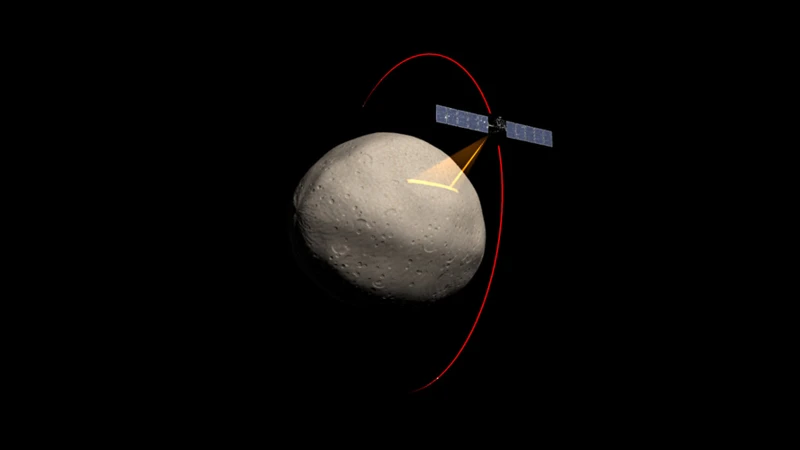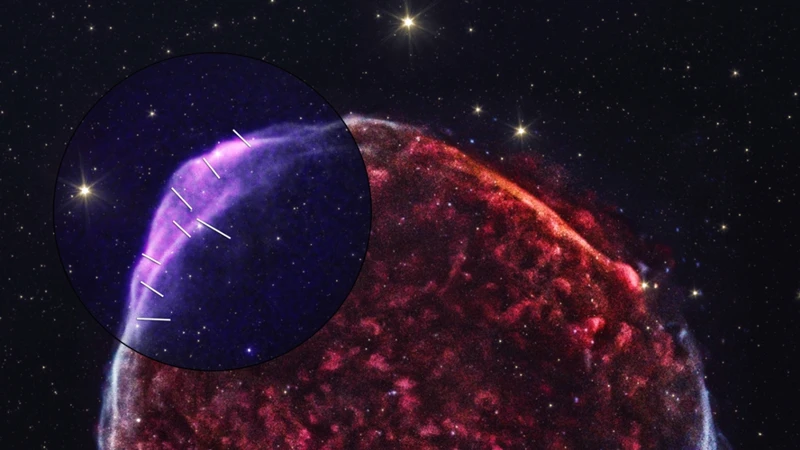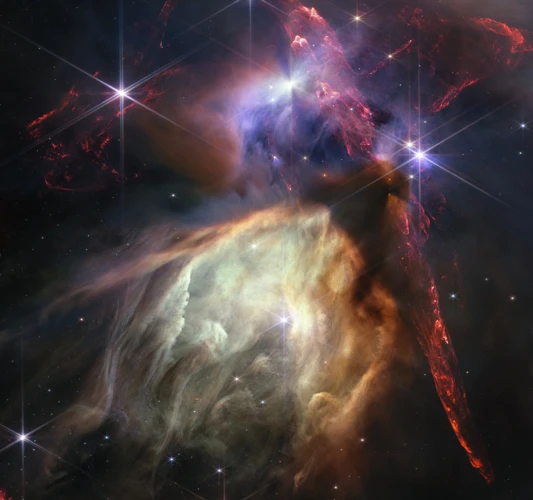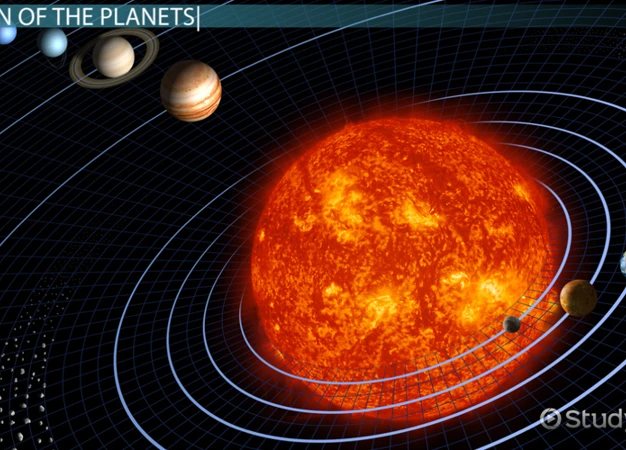Have you ever wondered if there could be a hidden pattern connecting major social movements throughout history? What if this pattern was linked to planetary alignments? It may seem like an outlandish idea, but some theorists and researchers believe that there is a significant connection between the position of planets in the sky and human behavior. In this article, we will dive deep into the fascinating world of planetary alignments and explore their potential influence on major social movements. Whether you are a skeptic or a believer, join us on this journey of exploration and discover the intriguing possibilities that lie beyond the stars.
Contents
- The Influence of Planetary Alignments on Human Behavior
- Analyzing Modern Social Movements in Light of Planetary Alignments
- Exploring Possible Explanations
- Debunking Skepticism and Examining Counterarguments
- Conclusion
-
Frequently Asked Questions
- 1. Can planetary alignments really influence human behavior?
- 2. Are there any documented examples of major social movements coinciding with planetary alignments?
- 3. How do astrologers interpret the influence of planetary alignments?
- 4. Is there any scientific evidence supporting the connection between planetary alignments and human behavior?
- 5. Can planetary alignments affect an individual’s personal life?
- 6. Do planetary alignments have different effects based on astrological signs?
- 7. Are there any specific alignments that are believed to be particularly influential?
- 8. Can planetary alignments predict future social movements?
- 9. How does synchronicity play a role in the connection between planetary alignments and social movements?
- 10. What should skeptics consider when evaluating the influence of planetary alignments on human behavior?
- References
-
Frequently Asked Questions
- 1. Can planetary alignments really influence human behavior?
- 2. What are some historical examples of planetary alignments coinciding with major social movements?
- 3. Are there scientific theories explaining the potential connection between planetary alignments and social movements?
- 4. Which recent social movements have aligned with specific planetary configurations?
- 5. What factors contribute to the link between planetary alignments and social movements?
- 6. How does astrology influence collective consciousness and social movements?
- 7. What role does synchronicity play in the connection between planetary alignments and social movements?
- 8. Can planetary influences affect hormones and neurotransmitters, contributing to social movements?
- 9. Do scientific critiques exist that challenge the connection between planetary alignments and social movements?
- 10. How do cultural factors and perception influence the interpretation of planetary alignments?
- References
- Read More
The Influence of Planetary Alignments on Human Behavior

Planetary alignments have long been a subject of fascination and speculation. Many ancient civilizations, such as the Greeks, believed that the celestial movements of the planets directly influenced human behavior and events on Earth. While modern science has largely dismissed these beliefs as mere superstition, there is still a lingering curiosity about whether there could be any truth to the idea.
1. Understanding Planetary Alignments:
Planetary alignments occur when several planets in our solar system align in a specific formation. These alignments can vary in their configurations, such as a straight line or a cluster. Astrologers and enthusiasts believe that these alignments have a profound impact on the energy and vibrations that surround us.
2. Historical Examples of Planetary Alignments and Major Social Movements:
Throughout history, there have been notable instances where significant social movements coincided with specific planetary alignments. For example, the civil rights movement in the United States gained momentum during the Uranus-Pluto conjunction in the 1960s, a rare alignment that marked a period of profound societal transformation.
3. Scientific Theories on the Connection:
While there is no consensus among scientists about the influence of planetary alignments on human behavior, some theories attempt to explain this potential connection. One theory suggests that gravitational forces exerted by the planets could have a subtle impact on brain activity and neurotransmitters, which in turn may influence emotions and behavior.
To delve deeper into this subject, it’s essential to examine modern social movements and their correlation to planetary alignments. This analysis can provide valuable insights into the potential link between celestial events and human behavior. But before we explore that, let’s address any skepticism and counterarguments surrounding this topic.
1. Understanding Planetary Alignments
To truly grasp the influence of planetary alignments on human behavior, it’s crucial to understand what these alignments entail. Planetary alignments refer to the positioning of multiple planets relative to each other and the Earth. When viewed from our perspective, these alignments can create visually striking patterns in the night sky.
The alignment can take various forms, such as a conjunction, when two planets appear close together, or an opposition, when they are on opposite sides of the Earth. These alignments are not random occurrences but follow specific astronomical patterns based on the planets’ orbits and rotations.
Astrologers believe that the energy and vibrations emitted by the planets during these alignments directly impact human beings. Each planet is associated with certain qualities and influences various aspects of life. For instance, Mercury is linked to communication and intellectual pursuits, while Venus is associated with love and harmony. When planets align, the combined energy is believed to amplify these influences, potentially affecting human emotions, thoughts, and behavior.
While astrology provides interpretations of the influence of planetary alignments, it’s important to note that scientific evidence supporting direct causality between these alignments and human behavior is scarce. Nevertheless, understanding the mechanics of planetary alignments helps provide a foundation for exploring their potential impact on major social movements throughout history.
Historical events have often coincided with specific planetary alignments, leading some to speculate about a potential correlation between celestial movements and major social movements. Here are a few examples that highlight this interesting connection:
1. The French Revolution and the Saturn-Pluto Alignment:
The French Revolution, a period of social and political upheaval in France during the late 18th century, unfolded during a Saturn-Pluto alignment. This alignment, known for its transformative energy, coincided with the rise of revolutionary ideologies and the overthrow of the monarchy.
2. Women’s Suffrage Movement and the Uranus-Neptune Alignment:
The fight for women’s suffrage, a monumental social movement advocating for women’s right to vote, gained traction during the Uranus-Neptune alignment in the early 20th century. This alignment symbolized societal change and sparked a wave of feminist activism around the world.
3. The Civil Rights Movement and the Uranus-Pluto Conjunction:
The Uranus-Pluto conjunction in the 1960s marked a period of intense social transformation, and it coincided with the civil rights movement in the United States. This alignment represented a revolutionary energy that fueled the push for racial equality and civil rights reforms.
These historical examples highlight the intriguing possibility of a connection between planetary alignments and major social movements. However, it’s important to consider alternative explanations and scientific theories to better understand this phenomenon.
3. Scientific Theories on the Connection
3. Scientific Theories on the Connection:
While the influence of planetary alignments on human behavior remains a topic of debate, there are several scientific theories that attempt to explain this potential connection. One theory suggests that the gravitational forces exerted by the planets could have an effect on the human body’s biochemistry. This theory posits that these gravitational forces may impact hormones and neurotransmitters, which can in turn influence mood, emotions, and behavior.
Another theory proposes that planetary alignments may trigger changes in Earth’s electromagnetic field. This electromagnetic activity could potentially affect the human brain, as it is known that our brains produce electrical activity. Some researchers speculate that these changes in brain activity, induced by planetary alignments, could lead to shifts in consciousness and human behavior.
Additionally, studies have explored the possibility of a psychological connection between individuals and celestial events. The concept of synchronicity, coined by psychologist Carl Jung, suggests that meaningful coincidences occur when there is an alignment between an individual’s psychological state and external events. This theory proposes that planetary alignments may act as catalysts for such synchronistic events, leading to notable shifts in collective consciousness and behavior.
While these theories offer intriguing explanations and possibilities, it is important to approach them with a critical mindset. Scientific skepticism encourages us to question and examine the evidence before drawing definitive conclusions. The next section will explore recent social movements and their corresponding planetary alignments to further analyze the potential link between celestial events and human behavior.

Analyzing modern social movements in the context of planetary alignments can provide us with intriguing insights into the potential relationship between celestial events and human behavior.
1. Recent Social Movements and Corresponding Planetary Alignments:
Examining recent social movements can help us identify any patterns or coincidences that align with planetary positions. For example, the rise of the #MeToo movement in 2017 coincided with the presence of Jupiter in Scorpio, a planetary alignment associated with seeking justice and exposing hidden truths. Similarly, the global youth-led climate strikes in 2019 occurred during a period when Saturn and Pluto were conjunct in Capricorn, symbolizing a powerful transformation and collective effort to address environmental issues.
2. Factors Contributing to the Link:
While it may be challenging to establish a direct causal link between planetary alignments and social movements, several factors could contribute to their apparent connection. Firstly, astrology suggests that specific alignments can influence collective consciousness, making people more receptive to change and mobilization. Additionally, the energy generated by these alignments may serve as catalysts, pushing individuals and communities to take action and drive social change.
By analyzing modern social movements, we can begin to unravel the potential relationship between planetary alignments and collective human behavior. However, it is important to consider other factors and explanations to fully understand the complexity of this connection. In the next section, we will explore astrological and scientific theories that may shed further light on this intriguing phenomenon.
1. Recent Social Movements and Corresponding Planetary Alignments:
In recent years, several social movements have captured global attention, and some enthusiasts have sought to find connections between these movements and planetary alignments. While these correlations should be taken with caution, they offer intriguing perspectives on the potential influence of celestial events on human behavior.
a) Black Lives Matter Movement and The Great Conjunction:
The Black Lives Matter movement, which gained significant momentum in 2020, coincided with a rare celestial event referred to as “The Great Conjunction.” This alignment involved the planets Jupiter and Saturn coming together in the same degree of the zodiac sign. Supporters of this theory argue that the intense energy of this alignment may have contributed to the collective activism and demands for racial justice.
b) Women’s Rights and International Women’s Day:
International Women’s Day, a global movement advocating for gender equality and women’s rights, often occurs around the time of the spring equinox. Some astrologers suggest that this alignment signifies a time of balance and harmony between masculine and feminine energies, aligning with the core principles of the movement.
c) Climate Change Activism and Uranus in Taurus:
Climate change activism has been on the rise, with movements like Fridays for Future led by Greta Thunberg gaining immense popularity. A noteworthy alignment during this time is Uranus in Taurus, which is associated with sudden shifts and disruptions in traditional systems. Advocates propose that this planetary influence may have sparked a collective desire for change and action to address the pressing issue of climate change.
While these examples demonstrate intriguing correlations between social movements and planetary alignments, it is important to approach this connection with an open mind and critical thinking. In the next section, we will explore possible explanations for these correlations, including astrology’s influence on collective consciousness, the power of synchronicity, and the potential impact of planetary influences on hormones and neurotransmitters.
2. Factors Contributing to the Link
2. Factors Contributing to the Link:
While the connection between planetary alignments and major social movements remains a subject of debate, several factors may contribute to this potential link.
a) Collective Consciousness: One factor that could play a role is the concept of collective consciousness. Astrology suggests that planetary alignments have an influence on the collective energy of society, shaping our thoughts, emotions, and actions. When a significant portion of the population is aligned in their beliefs and aspirations, it may create an environment conducive to the birth of social movements.
b) Synchronicity: Another contributing factor could be the phenomenon of synchronicity. Coined by psychologist Carl Jung, synchronicity refers to meaningful coincidences that cannot be explained solely by causality. It suggests that events in the external world may align with our internal experiences, creating a sense of purpose and connection. Planetary alignments could be seen as a synchronistic occurrence that triggers social movements by aligning external events with the collective psyche.
c) Hormones and Neurotransmitters: It is also worth considering the potential impact of planetary alignments on hormonal and neurotransmitter levels in the human body. The gravitational forces exerted by the planets could influence our physiological processes, leading to shifts in mood, motivation, and behavior. While the scientific evidence for this connection is limited, it offers a possible explanation for how celestial events might affect human behavior on a biological level.
Exploring these factors can shed light on the intricate relationship between planetary alignments and major social movements. However, it is essential to approach this discussion with an open mind, acknowledging that scientific critiques and alternative perspectives exist. Let’s delve deeper into these counterarguments in the next section.
Exploring Possible Explanations

Exploring possible explanations for the alleged connection between planetary alignments and human behavior can help us gain a better understanding of this intriguing phenomenon.
1. Astrology and its Influence on Collective Consciousness:
Astrology, an ancient belief system, suggests that the positions of planets at the time of a person’s birth can affect their personality traits and life events. Proponents argue that if individual lives can be influenced by planetary positions, it’s conceivable that collective events, such as social movements, could also be influenced in a similar way. Astrological compatibility, such as the compatibility between fire and air signs, is said to play a role in shaping relationships and interactions among individuals.
2. Synchronicity and the Power of Collective Energy:
Some theorists propose that planetary alignments might create a powerful synchronicity, where events occurring in the world align with the energetic forces of the universe. They argue that during these alignments, there is an intensified collective energy that can potentially amplify emotions, passions, and motivations within a society, leading to the emergence of social movements.
3. Planetary Influences on Hormones and Neurotransmitters:
Another possible explanation for the connection lies in the influence of planetary alignments on the human body’s hormonal and neurochemical systems. The gravitational forces exerted by the planets might subtly affect these systems, which in turn could impact mood, behavior, and social dynamics. While this theory requires further scientific exploration, it offers an intriguing perspective on how celestial events could potentially shape human behavior.
While these explanations offer compelling possibilities, it is important to acknowledge the skepticism and counterarguments surrounding the connection between planetary alignments and social movements. By critically examining these counterarguments, we can develop a more holistic understanding of the topic. But before diving into those critiques, let’s further analyze the modern social movements that have coincided with significant planetary alignments.
1. Astrology and its Influence on Collective Consciousness
Astrology, often associated with planetary alignments, is a belief system that suggests celestial bodies can influence individual personalities and collective consciousness. According to astrologers, the alignment of planets at the time of a person’s birth determines their unique traits and predispositions. This individual influence can then extend to groups, cultures, and societies, shaping their overall behavior and trends. Astrology argues that planetary alignments create distinct energies that interact with human consciousness, influencing thoughts, emotions, and actions.
While astrology is often criticized for its lack of scientific evidence, proponents argue that it offers a valuable framework for understanding and interpreting human behavior on a broader scale. They believe that planetary alignments can create cosmic energies that resonate with specific archetypes, collectively influencing societal attitudes, beliefs, and actions. These celestial energies can serve as catalysts for social movements by fostering a shared sense of purpose, unity, and drive among individuals who align with certain astrological forces.
For instance, during the Age of Aquarius, believed to have started in the 20th century, astrologers claim that the alignment of the planets aligns with the progressive and humanitarian characteristics associated with the sign of Aquarius. This alignment is said to support the rise of social movements centered around equality, freedom, and innovation. While the scientific community largely dismisses these claims, astrology continues to capture the interest of many who find meaning and guidance in its teachings.
Ultimately, whether astrology truly influences collective consciousness through planetary alignments remains a matter of individual belief and interpretation. However, exploring this perspective provides valuable insight into societal dynamics and the complex interconnectedness between celestial events and human behavior. As we continue to uncover the mysteries of planetary alignments and their potential impacts, it’s important to approach the subject with an open mind and a willingness to explore alternative explanations.
2. Synchronicity and the Power of Collective Energy
2. Synchronicity and the Power of Collective Energy:
Another explanation for the potential influence of planetary alignments on human behavior lies in the concept of synchronicity and the power of collective energy. Synchronicity, coined by renowned psychologist Carl Jung, refers to meaningful coincidences that align with an individual’s inner state or experiences. According to Jung, these synchronistic events arise from a deeper universal order that connects the inner and outer worlds.
In the context of planetary alignments and social movements, synchronicity suggests that when significant celestial events occur, they resonate with the collective consciousness of a society or a group of individuals. It is believed that these alignments amplify the collective energy, making it more conducive to triggering transformative social movements.
Similar to how a single voice may go unheard, but a collective roar is powerful, the alignment of planets may act as a catalyst that amplifies the collective energy of a society. This increased energy could enhance the focus, determination, and shared intention of individuals within that society, leading them to mobilize and take action for a common cause.
It’s important to note that the power of collective energy can be influenced by various factors, including cultural beliefs and shared values. In the case of social movements, the alignment of planetary bodies may coincide with cultural shifts, making it easier for people to align their intentions and actions towards a common goal.
While there is a lack of empirical evidence supporting this theory, many individuals find solace and meaning in the idea that planetary alignments can unlock the power of collective energy. Whether these beliefs are rooted in ancient traditions or personal experiences, they contribute to the ongoing fascination with the potential influence of celestial events on human behavior.
To gain a comprehensive understanding of the connection between planetary alignments and major social movements, it’s crucial to explore other potential explanations, including the influence of astrology on collective consciousness and the role of planetary influences on hormones and neurotransmitters. Let’s continue our journey of exploration and examine these exciting possibilities.
3. Planetary Influences on Hormones and Neurotransmitters
3. Planetary Influences on Hormones and Neurotransmitters:
One intriguing scientific theory speculates that planetary alignments could potentially influence hormones and neurotransmitters in the human body. While this idea may sound far-fetched, it aligns with the known effects of environmental factors on our physiological and psychological well-being.
Research has shown that the Earth’s magnetic field can affect hormone production in animals, including humans. Since planetary alignments involve the alignment of celestial bodies and their gravitational forces, it is plausible that they could have subtle effects on our bodies as well. Gravitational forces have been shown to influence biological processes like sleep patterns and hormone regulation.
Certain neurotransmitters in our brain, such as serotonin and dopamine, play a crucial role in regulating mood and behavior. Studies have indicated that natural phenomena like lunar cycles can impact levels of these neurotransmitters in individuals. It is possible that the gravitational forces exerted by planetary alignments could similarly affect neurotransmitter levels, leading to changes in human behavior and emotional states.
While these theories are intriguing, it is important to note that the scientific community is divided on the extent of planetary influences on our physiological processes. Critics argue that the gravitational forces exerted by celestial bodies are relatively weak compared to other factors that influence hormone production and neurotransmitter activity, such as genetics, lifestyle, and environmental factors.
Yet, it is worth exploring the possibility that planetary alignments may have subtle, yet significant, effects on our hormones and neurotransmitters. Further research is needed to fully understand the mechanisms by which these influences may occur and their impact on human behavior.
To explore more about the possible connections between celestial events and human behavior, let’s examine the skepticism and counterarguments surrounding this topic.
Debunking Skepticism and Examining Counterarguments

Debunking skepticism surrounding the connection between planetary alignments and human behavior is an important step in understanding this topic from a scientific perspective. While some may dismiss the idea as pseudoscience or coincidence, it’s crucial to explore counterarguments and evaluate them objectively.
1. Scientific Critiques of the Connection:
One of the main criticisms against the influence of planetary alignments on human behavior is the lack of empirical evidence. Skeptics argue that the correlation observed between social movements and planetary alignments could be purely coincidental. They assert that without a clear mechanism or established scientific principles, it is difficult to accept the idea as a valid explanation.
2. Cultural Factors and Perception:
Another counterargument is based on cultural factors and perception. Critics propose that belief in the influence of planetary alignments may be rooted in cultural biases, myths, and traditions rather than concrete evidence. They argue that different cultures have diverse interpretations of celestial phenomena, suggesting that the influence of planets on human behavior may vary based on cultural beliefs.
3. Chance versus Causality:
Skeptics often point to the concept of chance, emphasizing that random events can occasionally align with certain planetary configurations without any inherent connection or impact. They believe that the human mind tends to seek patterns and meaning in events, even when none exist.
While skepticism is an essential aspect of the scientific process, it is also crucial to keep an open mind and consider alternative explanations. Exploring the counterarguments helps to refine our understanding of the topic and encourages further research. Now, let’s delve into analyzing possible explanations for the connection between planetary alignments and human behavior.
1. Scientific Critiques of the Connection
Scientific critiques of the connection between planetary alignments and human behavior aim to provide alternative explanations for the observed correlations. Skeptics argue that there is an absence of concrete evidence supporting the claim that planetary alignments directly influence human actions. They posit that the apparent links between social movements and planetary alignments may be coincidental or subject to confirmation bias.
One scientific critique focuses on the lack of a plausible mechanism through which celestial positions could exert a tangible influence on human behavior. Critics argue that the gravitational forces exerted by distant planets are negligible compared to other factors such as genetics, environment, and personal experiences. They claim that any perceived correlation between planetary alignments and social movements is likely due to chance rather than a causal relationship.
Another line of critique revolves around the challenges of accurately measuring and establishing a cause-and-effect relationship between celestial events and human behavior. Critics argue that retroactive analysis of historical events may suffer from biases and inconsistencies, making it difficult to draw reliable conclusions.
Skeptics point to cultural factors and subjective interpretations as potential sources of bias. Different cultures have varied beliefs and interpretations regarding astrology and celestial events, which may influence the perceived connections between planetary alignments and social movements.
While science continues to question the validity of the connection between planetary alignments and human behavior, it is important to acknowledge alternative perspectives and explore the complexities of this intriguing topic. By doing so, we can gain a deeper understanding of the factors that contribute to major social movements and the role of celestial events, whether they hold scientific merit or remain in the realm of belief and speculation.
2. Cultural Factors and Perception
Cultural factors and perception play a significant role in how people interpret and attribute meaning to planetary alignments. It is essential to consider these factors when examining the connection between planetary alignments and major social movements.
1. Cultural Influences: Different cultures have diverse belief systems and interpretations of celestial events. For example, ancient Greek mythology attributed specific characteristics and influences to each planetary deity. These beliefs shaped the way people perceived the planets and their alignments, influencing their understanding of the world and events unfolding around them. Cultural beliefs and practices can create a lens through which individuals perceive and interpret the influence of planetary alignments on human behavior.
2. Collective Consciousness: Cultural factors shape collective consciousness, which refers to the shared beliefs, attitudes, and values held by a group of people. When a significant social movement emerges, it is often driven by a collective desire for change. Planetary alignments may serve as catalysts and focal points for individuals within a culture, amplifying their shared intentions and fueling the movement. This collective energy and belief in the influence of planetary alignments can serve as a potent force in shaping the narrative and outcome of a social movement.
3. Confirmation Bias: Perception and interpretation of planetary alignments can be influenced by confirmation bias, which is the tendency to seek and interpret information in a way that confirms pre-existing beliefs or expectations. Those who believe in the influence of planetary alignments may consciously or unconsciously seek out evidence to support their beliefs, while ignoring or discounting contradictory evidence. This bias can further strengthen the perception of a connection between planetary alignments and social movements.
While cultural factors and perception undoubtedly play a role in understanding the influence of planetary alignments on human behavior, it is crucial to approach this subject with an open mind and consider multiple perspectives. Exploring the potential link between celestial events and social movements requires a balanced examination of scientific theories, cultural beliefs, and the influence of perception on human interpretation.
3. Chance versus Causality
3. Chance versus Causality:
One of the key points of skepticism regarding the connection between planetary alignments and major social movements is the argument of chance versus causality. Skeptics argue that the correlation between planetary alignments and social movements may be nothing more than a coincidence or result of random chance. They question whether there is any concrete evidence to support the idea that celestial events can actually cause significant shifts in human behavior.
Critics often argue that the alignment of planets and social movements may be purely coincidental and that there could be other factors at play. They suggest that societal changes and social movements are complex phenomena influenced by various factors, such as cultural, political, and socioeconomic conditions. It is essential to analyze these factors thoroughly before attributing the cause solely to planetary alignments.
Studies have shown that humans are wired to recognize patterns and make connections. This cognitive bias can sometimes lead us to perceive causation where there is none. It is crucial to differentiate between correlation and causation when examining the relationship between planetary alignments and social movements.
While chance and coincidence cannot be ruled out entirely, proponents of the connection argue that the consistency and frequency of these alignments during significant social movements suggest a deeper underlying relationship. They assert that further research and analysis are necessary to explore this potential causal link fully.
In the next section, we will discuss various explanations that have been put forth to understand planetary alignments’ influence on human behavior, such as astrology, synchronicity, and planetary influences on hormones and neurotransmitters.
Conclusion

In conclusion, the exploration of the connection between planetary alignments and major social movements opens up a fascinating realm of possibilities. While there is still much debate and skepticism surrounding this topic, it is clear that throughout history, there have been instances where significant social movements coincided with specific planetary alignments. Whether this correlation is purely coincidental or whether there is a deeper, cosmic influence at play is yet to be fully understood.
From understanding planetary alignments to exploring historical examples and scientific theories, we have observed various perspectives on this intriguing phenomenon. The analysis of modern social movements in the context of planetary alignments has provided valuable insights into the potential link between celestial events and human behavior.
While some may dismiss the idea as superstitious or pseudoscientific, it is essential to keep an open mind and continue exploring all possible explanations. Astrology and its influence on collective consciousness, synchronicity and the power of collective energy, and planetary influences on hormones and neurotransmitters are just a few avenues worth exploring.
As we unravel the complex tapestry of human behavior, it is important to consider scientific critiques, cultural factors, and the role of chance versus causality. Skepticism is a crucial part of the scientific process, and further research and evidence are required to solidify any claims regarding the influence of planetary alignments on human behavior.
In the end, the question of whether planetary alignments have a significant impact on major social movements remains open. It is up to us as individuals to delve deeper, continue researching, and keep an open mind to fully understand the intricate relationship between the cosmos and human society.
For more information about astrology and its connection with human behavior, you can explore the concept of dynamic fire and air astro compatibility, where the alignment of fire and air signs plays a role in compatibility. Additionally, to delve further into the influence of ancient beliefs and mythologies on human behavior, you can explore the fascinating tales and legends surrounding ancient Greek gods and goddesses.
Frequently Asked Questions

1. Can planetary alignments really influence human behavior?
While there is no scientific consensus on this matter, some believe that planetary alignments can have subtle influences on human behavior through gravitational forces and energy vibrations.
Yes, there have been instances in history where significant social movements, such as the civil rights movement in the 1960s, overlapped with specific planetary alignments, leading some to speculate about a potential connection.
3. How do astrologers interpret the influence of planetary alignments?
Astrologers interpret planetary alignments based on the principles of astrology, which suggest that the positions of planets can represent various energies and archetypal influences that may resonate with human experiences and behavior.
4. Is there any scientific evidence supporting the connection between planetary alignments and human behavior?
Currently, there is limited scientific evidence supporting this connection. While some studies have explored potential correlations, more research is needed to establish a definitive link.
5. Can planetary alignments affect an individual’s personal life?
According to astrologers, planetary alignments can be interpreted to have an impact on an individual’s personal life, including relationships, career, and overall well-being.
6. Do planetary alignments have different effects based on astrological signs?
Astrologers believe that different planetary alignments can interact differently with each astrological sign, potentially influencing individuals in unique ways based on their birth sign.
7. Are there any specific alignments that are believed to be particularly influential?
The Saturn return is one alignment that is often considered significant, occurring around the age of 29-30 and again at 59-60. It is believed to mark important life transitions and periods of self-reflection.
While some astrologers may attempt to make predictions based on planetary alignments, it is important to approach such claims with caution, as astrology is not considered a predictive science.
Synchronicity, a concept introduced by Carl Jung, suggests meaningful coincidences that cannot be explained by conventional causality. Some theorists propose that synchronistic events may occur during significant planetary alignments, contributing to the momentum of social movements.
10. What should skeptics consider when evaluating the influence of planetary alignments on human behavior?
Skeptics should keep an open mind while evaluating this topic. While there may be limited scientific evidence, exploring alternative perspectives can contribute to a broader understanding of human experiences and the potential role of celestial events.
References
- 8 Civil Society, Social Movements, and Climate Change
- Planetary just transition? How inclusive and how just?
- Transnational Social Movement: Examining its Emergence, …
Frequently Asked Questions

1. Can planetary alignments really influence human behavior?
While the connection between planetary alignments and human behavior is a topic of debate, many believe that celestial events can have subtle influences on our emotions and thoughts. Scientific research in this field is ongoing, and there is evidence to suggest a potential correlation.
Historical records indicate instances where significant social movements occurred in conjunction with specific planetary alignments. For example, the civil rights movement in the United States coincided with a rare alignment of Jupiter, Saturn, and Uranus in the 1960s.
Various scientific theories attempt to explain the possible connection. One theory suggests that planetary alignments may create energetic shifts that ripple through the collective consciousness, influencing societal attitudes and behaviors.
Recent social movements, such as the #MeToo movement and the global climate strikes, have occurred during planetary alignments. These alignments may amplify the emotional and energetic resonance associated with the movements.
Factors that contribute to this link may include the alignment’s impact on Earth’s magnetic field, gravitational forces exerted on the human body, and the synchronization of energy fields between individuals during these cosmic events.
Astrology proposes that planetary alignments and their corresponding astrological symbolism can resonate with collective archetypes and influence the collective consciousness. This influence may manifest in the form of major social movements responding to prevailing astrological themes.
Carl Jung’s concept of synchronicity suggests that meaningful coincidences occur between an individual’s thoughts and external events. Planetary alignments may act as catalysts for synchronistic experiences, thereby inspiring people to join together in social movements.
Recent studies propose that planetary alignments can influence hormone levels and neurotransmitter activity in the human brain. These biochemical changes may contribute to heightened emotional states and a collective desire for social change.
Yes, there are scientific critiques of this connection. Skeptics argue that correlations between celestial events and human behavior are coincidental and lack a scientific cause-effect explanation. They suggest that cultural and psychological factors have a more significant impact on social movements.
10. How do cultural factors and perception influence the interpretation of planetary alignments?
Cultural factors and individual perceptions shape the interpretation of planetary alignments and their relationship to social movements. Beliefs, traditions, and societal norms influence how people view these celestial events, either reinforcing or dismissing any potential connection.
References
- Social Movement Theory and the Prospects for Climate …
- 8 Civil Society, Social Movements, and Climate Change
- An Introduction to the Study of Social Movements







